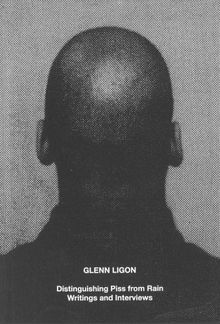ARTIST MONOGRAPHS
|
|
in stock $38.00 Free Shipping UPS GROUND IN THE CONTINENTAL U.S. |
 Glenn Ligon: Work, Work, Work, Work, Work, Work
Glenn Ligon: Work, Work, Work, Work, Work, Work
Published by Hauser & Wirth Publishers.
Poem by Gregg Bordowitz.
For four decades, New York–based artist Glenn Ligon (born 1960) has explored America’s literature and fraught racial history through works in a few signature mediums such as text-based paintings and neon. This volume, through studio documentation and a new text by fellow artist and New Yorker Gregg Bordowitz, focuses on various aspects of Ligon’s art-making. Glenn Ligon features newer works by the artist, such as a monumental new painting from Ligon’s ongoing Stranger in the Village series, begun in 1997. In the series, Ligon renders excerpts from novelist James Baldwin’s 1953 essay of the same name, which describes the writer’s experiences as an African American in a small town in Switzerland. Measuring 45 feet long, this triptych will mark the first time Ligon has used the entire text from Baldwin’s essay in a single work.
PUBLISHER
Hauser & Wirth Publishers
BOOK FORMAT
Slip, pbk, 8.25 x 10 in. / 304 pgs / 227 color.
PUBLISHING STATUS
Pub Date 2/15/2022
Active
DISTRIBUTION
D.A.P. Exclusive
Catalog: SPRING 2022 p. 123
PRODUCT DETAILS
ISBN 9783906915661 TRADE
List Price: $55.00 CAD $75.00
AVAILABILITY
In stock
in stock $55.00 Free Shipping UPS GROUND IN THE CONTINENTAL U.S. |
 Glenn Ligon: Untitled (America)/Debris Field/Synecdoche/Notes for a Poem on the Third World
Glenn Ligon: Untitled (America)/Debris Field/Synecdoche/Notes for a Poem on the Third World
Published by Regen Projects.
Text by Helen Molesworth. Poems by Robin Coste Lewis. Interview with Glenn Ligon, Hamza Walker.
New York-based Glenn Ligon (born 1960) is one of the most prominent and influential artists working today, in addition to being a writer and a curator. Over the course of his career, he has become known for his critical explorations of American history and society through text-based paintings, sculptures and films.This new series continues his ongoing interrogation into history, language and cultural identity by way of previous processes expanded by the artist. Featuring exhibition installation images as well as historical works, this publication includes an essay by Helen Molesworth, poems by Robin Coste Lewis and a conversation between Ligon and Hamza Walker that took place at Regen Projects in February 2019.
PUBLISHER
Regen Projects
BOOK FORMAT
Hardcover, 9 x 12.25 in. / 92 pgs / 29 color.
PUBLISHING STATUS
Pub Date 1/28/2020
Out of stock indefinitely
DISTRIBUTION
D.A.P. Exclusive
Catalog: SPRING 2020 p. 122
PRODUCT DETAILS
ISBN 9783791300009 TRADE
List Price: $45.00 CAD $63.00 GBP £40.00
AVAILABILITY
Not available
STATUS: Out of stock indefinitely. |
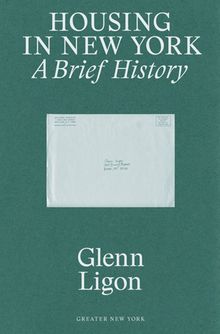 Glenn Ligon: Housing in New York
Glenn Ligon: Housing in New York
A Brief History
Published by MoMA PS1.
In conjunction with the exhibition, MoMA PS1 is publishing a series of readers that will be released throughout the run of the exhibition. These short volumes revisit older histories of New York while also inviting speculation about its future, highlighting certain works in the exhibition and engaging a range of subjects including disco, performance anxiety, real estate and newly unearthed historical documents. The series features contributions from Fia Backström, Mark Beasley, Gregg Bordowitz, Susan Cianciolo, Douglas Crimp, Catherine Damman, David Grubbs, Angie Keefer, Aidan Koch, Glenn Ligon, Gordon Matta-Clark, Claudia Rankine, Collier Schorr, and Sukhdev Sandhu, concluding with a round-table conversation with exhibition curators Peter Eleey, Douglas Crimp, Thomas J. Lax and Mia Locks. The series is edited by Jocelyn Miller, Curatorial Associate, MoMA PS1.
PUBLISHER
MoMA PS1
BOOK FORMAT
Paperback, 5.75 x 8.75 in. / 28 pgs.
PUBLISHING STATUS
Pub Date 3/22/2016
Out of stock indefinitely
DISTRIBUTION
D.A.P. Exclusive
Catalog: SPRING 2016 p. 150
PRODUCT DETAILS
ISBN 9780989985963 TRADE
List Price: $10.00 CAD $14.95 GBP £9.00
AVAILABILITY
Not available
STATUS: Out of stock indefinitely. |
 Glenn Ligon: People On The Cover
Glenn Ligon: People On The Cover
Published by Ridinghouse.
Text by Glenn Ligon.
In this artist project, Glenn Ligon traces the representation of black people in the United States on book covers, highlighting the deliberate use of typography, photography and graphics.
Best known for appropriating imagery and text from popular culture, Ligon has selected over 50 book covers – by both lesser-known and seminal authors such as James Baldwin, Norman Mailer, Toni Morrison – to explore a rich and complex set of histories and representations.
Spanning the twentieth century and grouped thematically, the covers reveal correspondences between the past and the present, as well as links between the social and visual constructs of race, beauty and the body.
To introduce the book, an essay by Ligon identifies one of the foundation stones of his life and work: the act of reading.
PUBLISHER
Ridinghouse
BOOK FORMAT
Paperback, 6.75 x 9.5 in. / 139 pgs / 64 color.
PUBLISHING STATUS
Pub Date 3/1/2015
Active
DISTRIBUTION
D.A.P. Exclusive
Catalog: Publisher Backlist
PRODUCT DETAILS
ISBN 9781909932067 TRADE
List Price: $25.00 CAD $34.95
AVAILABILITY
Out of stock
STATUS: Out of stock Temporarily out of stock pending additional inventory. |
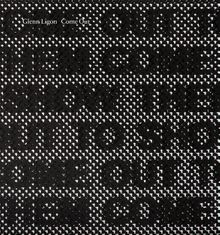 Glenn Ligon: Come Out
Glenn Ligon: Come Out
Published by Ridinghouse.
Text by Megan Ratner.
American artist Glenn Ligon’s latest monumental screen-printed paintings draw upon Minimalist composer Steve Reich’s taped-speech work Come Out.
Ligon’s series recontextualises the phrase ‘Come out to show them’ from the testimony of one of the badly beaten Harlem Six, which Reich isolated for his 1966 work. Whilst Reich repeats the refrain on two channels that gradually become out of sync, Ligon continually superimposes the words onto the canvas to form densely layered landscapes of text. Echoing Reich's music, the artist increases the number of silkscreen layers in each painting until the words verge on abstraction.
Bringing together illustrations of new studies and paintings originally exhibited at Thomas Dane Gallery, London, an essay by Megan Ratner examines the relationship between the paintings, the phrase and history.
PUBLISHER
Ridinghouse
BOOK FORMAT
Clth, 11.13 x 12.34 in. / 48 pgs / 25 color.
PUBLISHING STATUS
Pub Date 10/1/2014
Out of print
DISTRIBUTION
D.A.P. Exclusive
Catalog: Publisher Backlist
PRODUCT DETAILS
ISBN 9781905464999 TRADE
List Price: $22.00 CAD $29.95
AVAILABILITY
Not available
STATUS: Out of print | 00/00/00 For assistance locating a copy, please see our list of recommended out of print specialists |
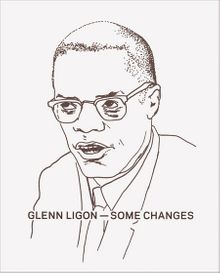 Glenn Ligon: Some Changes
Glenn Ligon: Some Changes
Published by The Power Plant.
Text by Darby English, Wayne Baerwaldt, Huey Copeland, Mark Nash, Wayne Koestenbaum. Interview by Stephen Andrews.
PUBLISHER
The Power Plant
BOOK FORMAT
Slip, Hardcover, 8.75 x 10.75 in. / 200 pgs / 35 color / 20 bw.
PUBLISHING STATUS
Pub Date 7/31/2009
Out of print
DISTRIBUTION
D.A.P. Exclusive
Catalog: FALL 2009 p. 81
PRODUCT DETAILS
ISBN 9781894212069 TRADE
List Price: $40.00 CAD $50.00
AVAILABILITY
Not available
STATUS: Out of print | 00/00/00 For assistance locating a copy, please see our list of recommended out of print specialists |
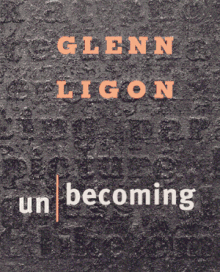 Glenn Ligon: Unbecoming
Glenn Ligon: Unbecoming
Published by Institute of Contemporary Art, University of Pennsylvania.
Artwork by Glenn Ligon. Contributions by Thelma Golden, Patrick Murphy, Richard Meyer.
PUBLISHER
Institute of Contemporary Art, University of Pennsylvania
BOOK FORMAT
Paperback, 7.5 x 9.5 in. / 64 pgs / 10 color / 20 duotone
PUBLISHING STATUS
Pub Date 2/2/1998
Out of print
DISTRIBUTION
D.A.P. Exclusive
Catalog: SPRING 1998
PRODUCT DETAILS
ISBN 9780884540861 TRADE
List Price: $20.00 CAD $25.00
AVAILABILITY
Not available
STATUS: Out of print | 10/23/2003 For assistance locating a copy, please see our list of recommended out of print specialists |

